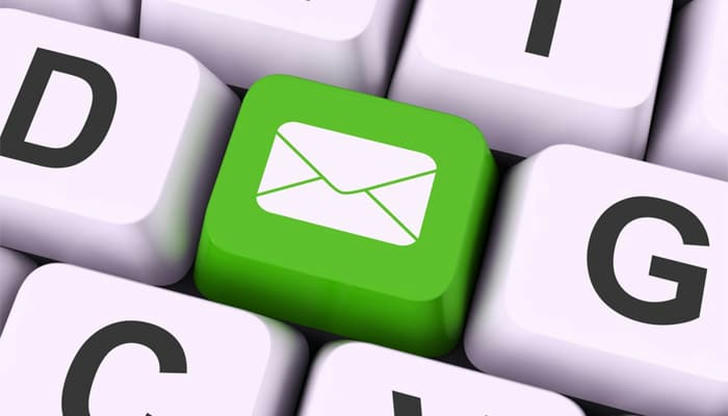Good Manners in a Virtual World: A Guide to Online Etiquette in 2024

The digital age has brought about incredible opportunities for connection, but it has also presented new challenges when it comes to communicating respectfully and professionally. In 2024, the way we communicate online—from emails to social media—plays a huge role in how we're perceived by others. Whether you’re engaging in a Zoom meeting, crafting an email, or simply sharing a post on social media, the rules of good manners apply—perhaps now more than ever.
But don't worry! You don’t need to be a digital etiquette expert to communicate well. This guide breaks down some essential principles of online manners that will help you navigate the virtual world like a pro—while keeping it fun and stress-free. We’ll also sprinkle in a couple of real-life examples and offer practical solutions to some common online faux pas.
The Golden Rule: Treat Others the Way You Want to Be Treated
It’s not just a mantra for in-person interactions—it’s the cornerstone of online etiquette. At the heart of every online communication is a simple principle: be kind, clear, and respectful. Whether you’re sending a quick message to a colleague or posting a comment on a friend's photo, it's important to keep in mind that you're communicating with real people behind those screens.
Real-Life Case 1: The “Reply All” Catastrophe
Let’s look at a scenario many of us can relate to. A busy professional named Emily accidentally hit "Reply All" on an email that was only meant for her direct manager. In her response, she expressed some frustration about the project, forgetting that the entire team would now see it. What followed was an awkward series of emails where everyone tried to backpedal and smooth over the situation.
Solution: Always double-check the recipients before hitting send. If you're unsure about something, it’s worth taking a moment to re-read the message and ensure it’s going to the right people. When in doubt, send a personal message or schedule a quick call to clarify.

Email Etiquette: Clear, Concise, and Professional
Emails remain the most formal communication tool in the digital world. Whether you’re sending a work-related email or corresponding with a friend, good email etiquette can make all the difference.
Do’s:
● Use a Clear Subject Line: Your subject should give the recipient a good idea of what the email is about. "Meeting Schedule Change" is far more helpful than just “Hi.”
● Salutations Matter: Even if you’re in a rush, a friendly greeting like “Hi [Name]” or “Dear [Name]” adds a personal touch.
● Mind Your Tone: Without body language or vocal tone to help convey your feelings, it’s easy for messages to come across as rude. Aim for a tone that’s professional and friendly.
Don’ts:
● Avoid Using ALL CAPS: Writing in all capital letters is the digital equivalent of yelling. Use them sparingly.
● Don’t Overload with Emojis (unless it’s informal): Emojis can be fun, but they’re not always appropriate for work emails. Stick to words and avoid overwhelming the reader with too many smiley faces and thumbs-up icons.
Real-Life Case 2: The Unclear Email
James, a project manager, sent an email to his client asking for updates on a project but didn’t specify what exactly he needed. The client, unsure whether to send progress reports or data, responded with a lengthy email full of irrelevant information. James had to spend time sorting through the email, all because he didn’t make his request clear from the start.
Solution: Be specific in your emails. When you need information, ask for it clearly. For example: “Could you please send me the updated project status report by Friday?” This saves everyone time and avoids confusion.

Video Calls and Virtual Meetings: Keep it Professional
In 2024, remote work is here to stay, and with it, video calls have become the norm. Whether you're attending a Zoom meeting or a virtual happy hour, maintaining good manners during video calls is crucial for projecting professionalism and respect.
Do’s:
● Be On Time: Just like an in-person meeting, showing up on time for virtual meetings is a sign of respect.
● Test Your Tech: Before joining the meeting, test your microphone, camera, and internet connection. Technical glitches can be frustrating for everyone involved.
● Mute When You’re Not Speaking: Background noise can be a huge distraction during virtual meetings. Muting your mic when you’re not speaking ensures that everyone can focus on the conversation.
Don’ts:
● Avoid Multitasking: It can be tempting to check your email or scroll through your phone during a meeting. However, this can be distracting and disrespectful to the speaker.
● Don’t Forget About Your Background: Make sure your virtual background is appropriate, and tidy up the area behind you if you're using a real background. No one wants to see your laundry pile mid-meeting!
Social Media Etiquette: Mind Your Public Image
Social media platforms have transformed how we communicate, and while they offer a more informal space to interact, it’s still essential to be mindful of how you present yourself online. After all, anything you post could potentially be seen by future employers, colleagues, or even family members.
Do’s:
● Engage Positively: Share posts that are uplifting, informative, or inspiring. Like and comment thoughtfully on other people's content to foster good relationships.
● Privacy is Key: Regularly check your privacy settings to make sure you're comfortable with who can see your posts.
Don’ts:
● Avoid Oversharing: Social media isn’t a diary. Posting too much personal information can make others uncomfortable, and it can even affect your professional reputation.
● Don’t Get Into Online Arguments: Disagreements happen, but it’s best to handle them privately or, even better, just walk away. Public arguments can escalate quickly and leave a bad impression.

Navigating Group Chats: Keep it Engaging but Respectful
Group chats are an essential part of modern communication, especially in work settings. But when you throw multiple people into a chat, it can get a little chaotic.
Do’s:
● Use Threads When Possible: If your platform allows, use threads to keep conversations organized, especially in larger groups.
● Be Concise: In group chats, brevity is your friend. Keep your messages clear and to the point to avoid overwhelming people with too much information.
Don’ts:
● Avoid Spamming: Sending too many messages in a row can clutter the chat. Try to consolidate your thoughts into one message.
● Don’t Leave People Out: If you’re responding to a message from someone and want to involve others, tag them so they’re in the loop.
Conclusion: Digital Manners Matter
Good manners in the virtual world may not seem as straightforward as they are in person, but they’re equally important. Whether you’re sending an email, participating in a video call, or posting on social media, maintaining respect, clarity, and professionalism will ensure that you come across as thoughtful and responsible. A little attention to detail can go a long way in building positive relationships and creating a welcoming digital environment.
Remember, everyone is still learning the ropes of online etiquette in 2024, so don’t be too hard on yourself if you make a mistake. The key is to stay mindful of how your actions affect others and to approach each interaction with empathy and respect.
By mastering the art of good manners in the virtual world, you’ll not only avoid awkward situations but also enhance your online presence, making every communication a success.
